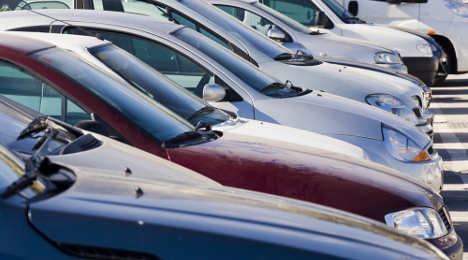AutoNation’s view of used market ‘volatility’ & models that are ‘premium’

Photo from Shutterstock.com
While also addressing current industry developments such as Carvana’s financial moves and new-vehicle inventory levels, AutoNation chairman and chief executive officer Mike Jackson touched on what used models are “worth a premium in the marketplace.”
And what Jackson described within that “premium” category likely aren’t necessarily the models that currently might be in your certified pre-owned inventory.
“There is some volatility in the pre-owned market,” Jackson said during AutoNation’s latest quarterly conference call. “If you’re looking for something that was built in 2008, 2009, 2010, there’s relatively small supply since there was little production in those years. And so those vehicles are worth a premium in the marketplace.”
Jackson elaborated about what else is trigging that “volatility,” moving on to what’s composing the off-lease channel on the wholesale market where many potentially certified units could be procured.
“There’s a lot of late-model stuff coming off lease,” Jackson said. “The issue is, more than anything, is it’s the wrong mix because the install capacity three, four years ago was heavily weighted towards cars, and that’s where the marketplace was pushed, even though there was already a strong migration towards trucks.
“So therefore, you have a mismatch between what the market wants to buy and what’s coming back to market. So you have some residual value pressures there,” he continued.
“So at the end of the day, it depends on what seat you’re in,” Jackson went on to say. “If I’m in a seat where I’ve made a bet on residual values three, four years ago, and now you have this wave coming back with a mismatch in mix, I better have set up enough reserves for that because it’s going to be an issue.”
Reaction to Carvana
Wall Street watchers asked for Jackson’s reaction to the efforts by online retailer Carvana, which rolled out a $100 million initial public offering at the end of the first quarter. Jackson began with a blunt assessment when asked to compare Carvana and AutoNation.
“I would say the first difference is we’re profitable and they’re not, so that’s the starting point,” Jackson said. “I’d match our digital capabilities with anyone and they’re only going to get better.
“We started years ago. We understood that to compete in this marketplace, digital was going to be crucial,” he continued. “It was the reason we left behind local market brand names that were 100 years old, because to compete in digital, you need one name.
“And so we took the lead, built the brand AutoNation and then we understood that it had to be – your digital site had to be transactional, people had to be able to do things and we’re well on our way,” he added.
As Jackson hailed the online capabilities AutoNation has, he also reiterated the importance of the rooftops and showrooms the dealer group operates. Carvana’s physical structures include eye-catching vending machines for its vehicles, but otherwise the online retailers often comes to where the customer is located.
Jackson insisted that the “practical experience” AutoNation possesses means that 99 percent of customers “want to come to a physical place, examine the vehicle, have the right to change their mind to something else.
“And here’s one of the great ironies,” Jackson continued. “(Customers) feel more empowered, in control in a dealership than they do in their own driveway, because it’s awkward in their driveway when the car just shows up, and they look at it and say, ‘Oh, that’s not what I hoped for. How do I get out of this mess and how I get this thing out of my driveway?’ They don’t like it.
“So we think we have it figured out, this right combination of brand, digital muscle and brick and mortar. And we’ll see that unfold over the next year,” Jackson went on to say.
Assessment of new-vehicle inventory
As has been the discussion of the American International Automobile Dealers Association as well as a wide array of analysts, new-vehicle inventory is high. Jackson said AutoNation’s new-model inventory is “fine,” sitting at 71 days as of the close of the first quarter.
“I think the basic statement is if I look at the level of inventory and the production plans, basically the decision has already been made,” Jackson said. “The industry will sell over 17 million vehicles this year. That is not the variable. The variable is the level of incentives and the level of leasing. For 2017, the die is cast. It’s plus 17 million units.”
Jackson acknowledged many industry observers will be wondering what 2018 might hold. He stated the decisions OEMs make this summer and fall will impact that timeframe.
“If the plan is to take incentives up another level to try to drive another 17 million-plus, I don’t know whether that’s doable or not,” Jackson said. “Our only variable is how high are the incentives and where are they packaged.”

 View The Latest Edition
View The Latest Edition

